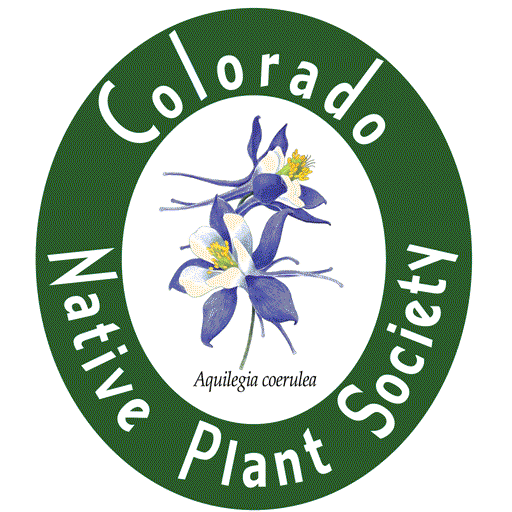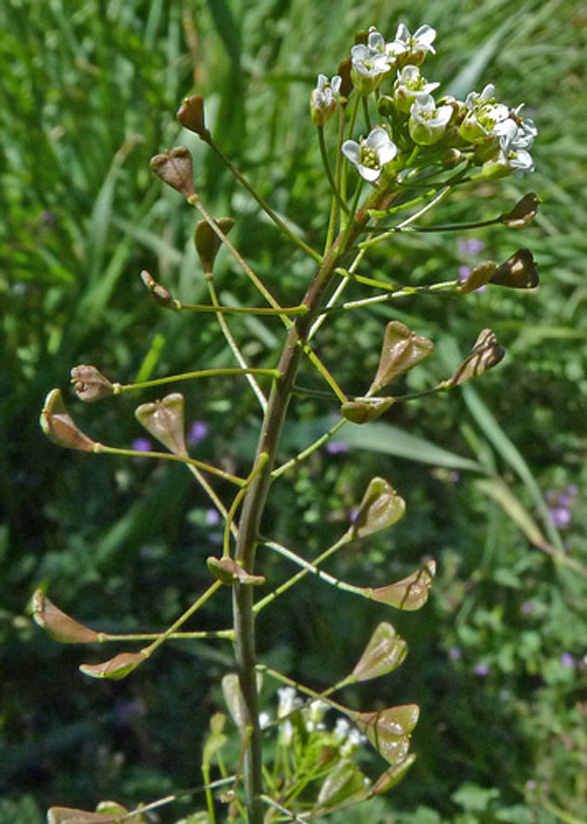


Introduced Plants
What is an Introduced Plant?
An introduced species, sometimes called an exotic plant or a non-native plant, is the opposite a native plant, so in order to understand what what we mean by an “introduced plant”, we need to define a “native” plant. The NRCS (Natural Resources Conservation Service of the US Department of Agriculture) defines a native plant as, “a plant that is a part of the balance of nature that has developed over hundreds or thousands of years in a particular region or ecosystem”.
Most botanists, and both of the books on the Colorado flora, The Flora of Colorado by Jennifer Ackerfield, and Weber and Wittmann’s Colorado Flora, determine that a plant is considered native if it was present in the United States prior to the date that Columbus sailed to San Salvador in 1492. It may seem a bit arbitrary to pick one date to label plants “native” if they were present before, and “introduced” if they were present after a given date, but that voyage began what is called “the Columbian Exchange” the beginning of a massive exchange of diseases, food, crops, and plants between the New World and the Old World that began on that date. For food, Europeans introduced horses, pigs, cows and chickens among other animals. Food crops such as corn, potatoes, beans and squashes were introduced.
Plant species were introduced right away. On Columbus’s second voyage, he brought with him seeds for such plants as wheat, salad greens, grapes and sugarcane. Since that time to the present day, plants have been constantly “introduced” here from all around the world. The result is that there are an estimated 3,998 introduced plant species (the US has 18,743 native plants) established in the United States today. In Colorado there are 3322 species of native plants and 536 introduced species (including varieties and subspecies).
Some Stories About Introduced Plants
One of the best known plants in the U.S. and Colorado is the ubiquitous dandelion (Taraxicum officinale) which was introduced by Europeans. Besides being able to eat the leaves, dandelions were used medicinally to aid digestion, stimulate the appetite and as a diuretic. It is not considered to be invasive in Colorado because it doesn’t replace native plants, but it is found from the plains to the alpine.
Another plant that was introduced for its medical properties was St. Johnswort (Hypericum perforatum), which is on the Noxious Weed C List (widely spread, control recommended but not required) in Colorado. It was used by Europeans as an anti-inflammatory.
Other plants were brought here because they were beautiful and favorites from home. The daisy (Leucanthemum vulgare) was planted in mining camps in the west, spread into natural areas and is now considered invasive.
Whether a plant is considered native or introduced, can sometimes be a harrowing decision. Consider Common Reed (Phragmites australis) which is on the Colorado Noxious Weed Watch List. Common Reed which grows in marsh systems, is thought to be one of the most common plants worldwide. It is native and endemic in the United States, and is widespread but not invasive. However, the species suddenly seemed to become invasive, and spread rapidly across the US (and into Colorado). At first it was thought that the species had undergone some sort of genetic mutation, making it invasive. However, more recent genetic studies have indicated that a more invasive form of the species was introduced accidentally to North America, probably in ballast material sometime during the late 1700s or early 1800s. That subspecies is now replacing the native species in the US.
Another beautiful, but uncommon Colorado wildflower, Musk Flower (Mimulus moschatus), could be called “the traveling species”. Musk Flower is native, but uncommon in Colorado, growing along springs, streams and ponds in Moffat, Routt and Jackson counties. It is not considered rare in Colorado, but is considered native and rare in New England, extremely rare (S1) in New Hampshire and Massachusetts, and uncommon (S3) in Vermont. However, it is considered an introduced species in New York and Maine. So is it native or introduced?
Well, the story is that sometime in the 17th or 18th centuries, some of those pesky Europeans saw our Mimulus in the western states, fell in love with them, and carried the seeds back to England, planting them in flower boxes. Somewhat later, their offspring, while immigrating back to the US, brought some plants back with them, planting them in flower boxes in New England, where they escaped into the wild. So the result is that it is unclear whether Mimulus moschatus, which is quite common in the western US, is native in the east, or introduced from the west via. England.
Some Introduced Plant Photos
Click on the photo to get started.
Scroll through usinge left & right arrows.
Click the “i” to see information about the plant and the bottom down arrow remove the thumbnail carousel.
Shepherd's Purse (Capsella bursa-pastoris)
Be Careful: The Thistle You Pull May be Native or Even Rare
One of the big mistakes that amature and sometimes more knowledgeable plant enthusiats make is to assume that all thistles in Colorado are non-native and even invasive. But the majority of thistle species found in Colorado are native and some are rare and endangered. So read this article about native and non-native thistles before you rip up the next one you see.
The two rare thistle species are Owenbye’s Thistle (Cirsium owenbyi), which is imperiled (S2) in Colorado, and vulnerable (G3) globally, and Adobe Hills Thistle (Cirsium perplexans), which is also imperiled in Colorado, and vulnerable globally.
Why Do We Champion Native Plants?
A good question you might ask is, “why does it make any difference that a plant is native or introduced”? Why don’t we just call our Society, the “Colorado Plant Society”, and forget the “native” part? In order to answer this question, we need to go back to our original definition of a native plant from the NRCS: “a plant that is a part of the balance of nature that has developed over hundreds or thousands of years in a particular region or ecosystem”.
In his book Bringing Nature Home, Douglas Tallamy makes a very clear case of why native plants are preferred over plants from other places. He says that animals (including us) get our food directly from plants, either by eating them directly or by eating something else that ate a plant. That is because plants are the only organisms that photosynthesize the sun’s energy and convert it to carbohydrates. The most important organisms that take energy from plants by eating them are insects. They are in fact the bottom (or foundation) of the food chain. But most insect herbivores are only able to eat plants that they co evolved with over thousands of years. That is because plants are armed with toxins that they employ to fend off herbivores. The insects have developed the physiology to be able to digest those toxins. However, it takes thousands of years to develop that ability.
Those same insects are unable to eat, digest or even recognize, plants to which they have had no evolutionary contact. Tallamy points out that in his native state of Pennsylvania, native oaks host 511 species of moths and butterflies. In contrast, the Ginko Tree, an ancient tree found only in a tiny area of China, which is planted in many urban forests in the US, harbors only one species of moths or butterflies.
In addition to insects, all amphibians and most rodents and reptiles rely on insects for food. 96% of bird species rely on insects to feed their young.
Insects Return the Favor
This co-evolution of plants and insects also applies in reverse, to benefit plants. Besides wind and water, plants rely on insects as pollinators. Their flowers are uniquely designed to attract the most effective insects to disperse their pollen to other plants. Bright blue and violet petals attract bees; red, pink, fuchsia, or purple flowers attract hummingbirds; yellow, orange, pink, and red attract butterflies; and night-blooming flowers attract night time pollinators, like moths and bats.
Once attracted to the plant, the pollinator will often find the perfect petal morphology to lead it to the plant nectar and the pollen the plant wants to pollinator to spread. The Western Red Columbine (Aquilegia elegantula) is a favorite of hummingbirds because it is red and stores nectar in its long spurs, ideally placed for the hummingbird’s long beak.
Examples of this are endless. When a bee is attracted to any of our blue Hall’s Penstemon (Penstemon hallii) , they have a perfect bi-lobed petal to land on, and the plant’s anthers are perfectly locatd to sprinkle the pollen on their back when they are consuming the plant’s nectar. Yellow Marsh Saxifrage (Saxifraga hirculus) has little spots on its petals that act like little airport landing lights to lead butterflies to the nectar. These illustrations are only some examples of how plant morphological characteristics have evolved over thousands of years in a symbiotic dance with pollinators.
As Do Those Soil Organisms
Equally, or possibly more importantly, is what is happening in the soil. Just as insects and plants have evolved symbiotically over time, funghi, bacteria and other soil organisms have developed critical relationships with their native plants. Recent research has indicated that the relationship between funghi and plants developed prior to plants migrating from water to land over a billion years ago. And some researchers believe that plants would never have been able to establish on dry land without these fungal relationships.
As animals do, fungi are unable to photosynthesize and must rely on other plants to get carbohydrates. To do that, they attach huge webs of mycilia which are a network of fungal threads or hyphae to the end of the roots of plants. The funghi receive carbohydrates from the plant, and, in turn, transport minerals and moisture from the soil into the plant’s roots. Because the fungal mycilium network is much larger than that of the host plant’s roots, the plant is much more successful at absorbing nutrients, minerals and water from the soil. Formation of this mycorrhiza occurs in practically all plants except the mustard family (Brassicaceae), goosefoot family (Chenopodiaceae), sedge family (Cyperaceae) and aquatic plants. Many researchers believe that many plants could not survive without these symbiotic relationships.
So, the evidence is clear. Native plants, because they have co-evolved with other organisms in their home ecosystems, have a far greater beneficial effect on the health of their native insects, animals and soil organisms.
– Mo Ewing

